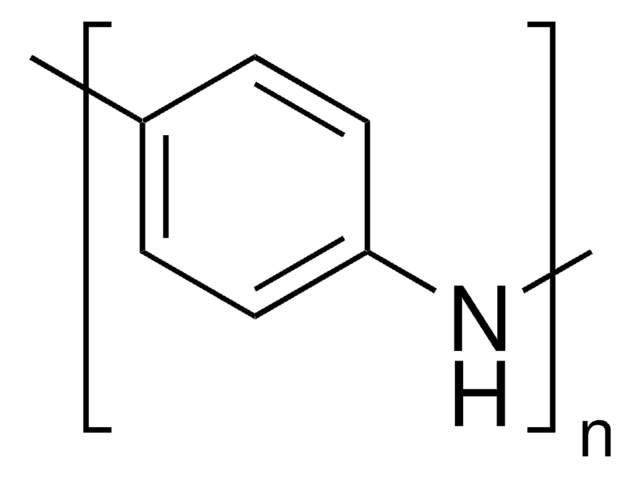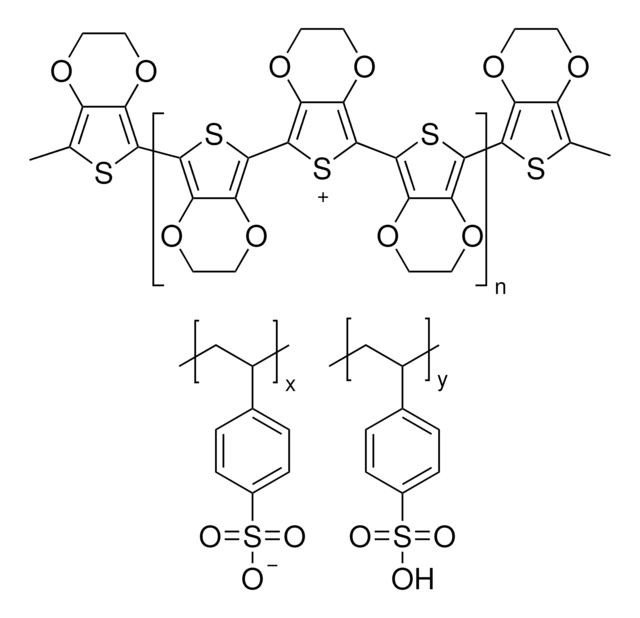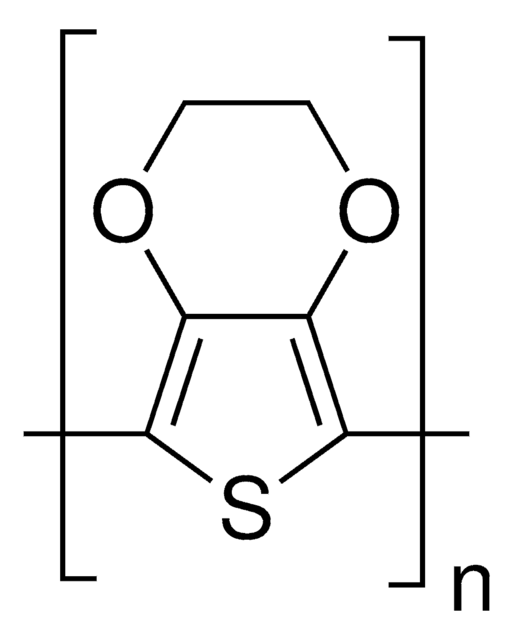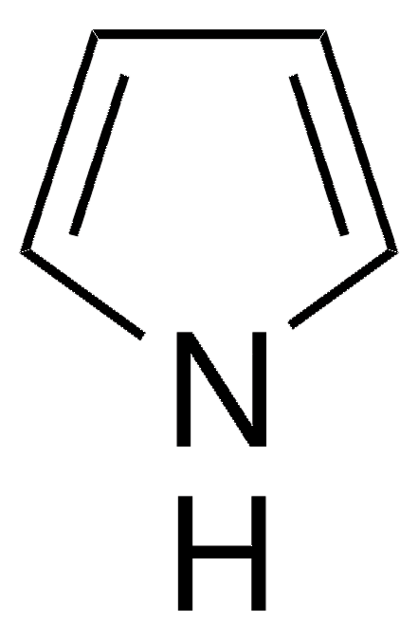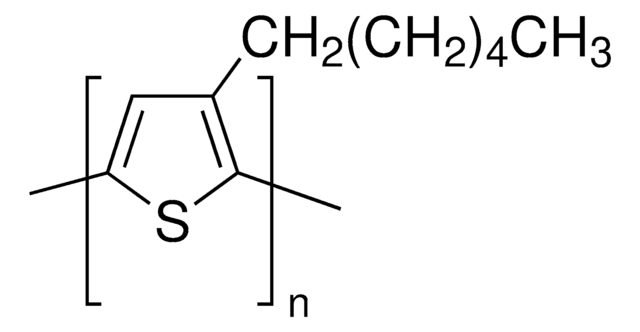577030
Polypyrrole
conductivity 10-50 S/cm (pressed pellet)
Sinónimos:
PPy
About This Item
Productos recomendados
Formulario
solid
contiene
proprietary organic sulfonic acid as dopant
características de los productos alternativos más sostenibles
Design for Energy Efficiency
Learn more about the Principles of Green Chemistry.
sustainability
Greener Alternative Product
solubilidad
H2O: insoluble
organic solvents: insoluble
categoría alternativa más sostenible
, Enabling
cadena SMILES
[nH]1cccc1
InChI
1S/C4H5N/c1-2-4-5-3-1/h1-5H
Clave InChI
KAESVJOAVNADME-UHFFFAOYSA-N
¿Está buscando productos similares? Visita Guía de comparación de productos
Descripción general
PPy may be prepared by a standard electrochemical technique. It may also be prepared by reacting -napthalene sulfonic acid (NSA) and ammonium peroxo-disulfate in aqueous medium. The charges on the surfaces can be easily modified by doping the polymer during its synthesis. Solubility and conductivity measurements of PPy doped with camphor sulfonic and dodecyl benzene sulfonic acid have been reported. Lectrosensitivity and lower oxidation potential of PPy make it potentially useful for drug delivery, chemical sensors, batteries, ion selective electrodes, biosensor and biochemistry research.
Aplicación
- electrode materials for sensors used in electrocardiography (ECG)
- formation of electrode material for a variety of energy storage applications
- encapsulation of lithium sulfide (Li2S) as a high performance cathode material
Envase
Otras notas
Código de clase de almacenamiento
11 - Combustible Solids
Clase de riesgo para el agua (WGK)
WGK 3
Punto de inflamabilidad (°F)
Not applicable
Punto de inflamabilidad (°C)
Not applicable
Equipo de protección personal
dust mask type N95 (US), Eyeshields, Gloves
Elija entre una de las versiones más recientes:
¿Ya tiene este producto?
Encuentre la documentación para los productos que ha comprado recientemente en la Biblioteca de documentos.
Los clientes también vieron
Artículos
By altering the physicochemical properties, smart or intelligent drug delivery systems can be designed to deliver therapeutic molecules on-demand. Learn more about the application of stimuli-responsive materials in drug delivery.
The application of conducting polymers at the interface with biology is an exciting new trend in organic electronics research.
Dr. Tan and researcher introduce recent trends in Self-healing Soft Electronic Materials and Devices. The emergence of smart, functional SHPs will be highly beneficial to the advancement of the next-generation self-healing soft electronic devices. Autonomously self-healing devices could help to minimize the need for repair or replacement of electronics and machines, potentially reducing the cost of materials and reducing electronic waste.
While dye sensitization as the basis for color photography has been accepted for a very long time,1 attempts to use this principle for the conversion of solar light to electricity generally had resulted only in very low photocurrents, below 100 nA/cm2.2
Nuestro equipo de científicos tiene experiencia en todas las áreas de investigación: Ciencias de la vida, Ciencia de los materiales, Síntesis química, Cromatografía, Analítica y muchas otras.
Póngase en contacto con el Servicio técnico

